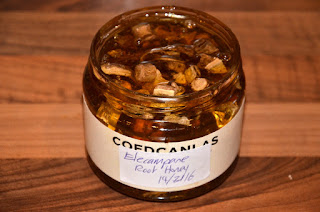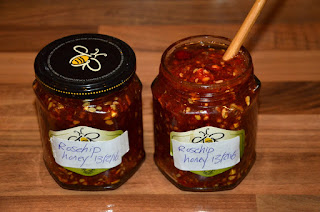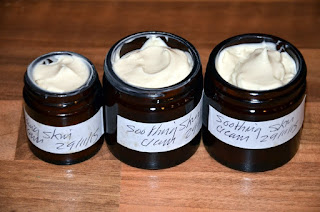The first thing to consider is prevention by keeping healthy and able to resist bugs which you are exposed to. The common cold virus can only thrive when conditions in the body allow it to, when we are run down, under stress and overloaded with toxins. A healthy diet with plenty of fresh fruit & vegetables is the basis of good health. Nutritional deficiencies and difficulties with digestion are often found in people who suffer from respiratory problems. The lungs share responsibility for removing waste with the bowels, the kidneys & the skin, if those systems are not functioning well this can lead to a build-up of catarrh in the respiratory system. Those who have a tendency to respiratory conditions are advised to avoid or limit mucus-forming foods such as dairy products, gluten, eggs, potatoes & other starchy root vegetables, sugar & junk foods. It is a good idea to cut down on these foods if you are developing a cold. Polluted air also adversely affects the respiratory system, particularly the effects of smoking which increases the risk of many serious health problems. Having a good balance of work, rest & play is also important in keeping our systems strong and able to resist infections.
Nourishing vegetable soup - recipe at http://wwootw.blogspot.co.uk/2015/01/new-years-day-wassail-blessing-on-land.html
The next thing to consider is the use of herbs which stimulate the immune system. Echinacea, Garlic, Thyme, Ginger & Turmeric all have immuno-stimulatory actions as well as anti-microbial actions. Many spices have immune-enhancing, antimicrobial & decongestant actions including Cinnamon, Cardamom, Fenugreek & Coriander, they also improve digestion and balance the gut flora. Food which contains spices plus onions & mushrooms such as curry & stir-fry and chicken & vegetable soup is good for helping to keeping the immune system strong in the winter months. A great remedy for fighting colds is Fire Cider Vinegar which combines spicy food such as Horseradish with the healing properties of cider vinegar. Horseradish root is our native hot pungent food. It stimulates digestion and helps eliminate waste products of fevers & colds, clears the sinuses & is warming for muscle aches.
Fire Cider Vinegar
Horseradish root
Fresh root Ginger
A head of Garlic
Several red Chillies
Grate or chop the herbs and cover with cider vinegar to infuse for 3-6 weeks. I put roughly chopped herbs and vinegar in my nutribullet which chopped them up very finely for maximum absorption of the healing properties into the vinegar. Strain off the vinegar and cover the herbs with more vinegar to make a second batch. Take a teaspoon in hot water with some honey once or twice a day during the cold season and more frequently when developing a cold.
Horseradish, Garlic, Ginger & Chillies
Roughly chopped & covered in cider vinegar
Fire Cider Vinegar
The first sign of a developing cold is often a sore throat. I find a hot infusion of Sage leaves, root Ginger & Lemon with honey to be helpful for sore throats. Self Heal is particularly known for being useful for throat conditions, taken as a tea or a tincture. Honeysuckle is also known for helping with sore throats, the flowers can be used to make Honeysuckle honey. Swollen glands are a sign of infection, that the lymphatic system is removing waste as the body fights infection, Cleavers tincture is helpful for supporting the lymphatic system during & following an infection.
At the first sign of a cold take 1/2 a teaspoon of Echinacea tincture and 500mg of Vitamin C every 2 hours to help fight the infection. Also have food which contains Vitamin C and bioflavonoids which help the body to absorb Vitamin C such as Citrus fruit & Rosehips, such as Rosehip Honey (see below). Take a hot infusion of dried Elderflowers, Peppermint & Yarrow every 1-2 hours to reduce fever & clear catarrh. If you have fluey aches & pains add Boneset to the tea, if available. Other herbs which are helpful for cold & flu teas are Ground Ivy & Catmint. Vervain will help a cold to break and helps with convalescence. Aromatic inhalations or hot footbaths or Rosemary, Lavender, Thyme, Cinnamon or Chamomile can help reduce swelling of mucous membranes and loosen catarrh.
Lemon, Ginger & Sage tea
Honeysuckle honey
Echinacea Tincture
Echinacea Tincture
Dried Catmint
Elder is a great aid to fighting colds & flu. The dried flowers are used in the classic cold season tea. Elderflowers & Elderberries can be used to make various remedies including tinctures in alcohol, elixirs which are made with single herbs or combinations of herbs in a jar half filled with runny honey & half filled with brandy and left for about 6 weeks to macerate then strained (see recipe below), glycerites using vegetable glycerine to macerate the herbs which are useful for those who can't have alcohol or honey (see recipe below) and herbal vinegars using vinegar instead of alcohol. Hot Elderberry wine before bed will help you to sweat and throw off a fever.
Elderflowers
Elderflower remedies - recipes at http://wwootw.blogspot.co.uk/2015/06/midsummer-season-of-light-and-flowers.html
Elderberries
Elderberry Tincture
Elderberry Vinegar
Anti-viral Elder Glycerite
6-8 heads fresh Elderflowers picked when in flower
500ml/2 cups vegetable glycerine
Juice of 2 Lemons
6-8 heads fresh Elderberries picked when ripe later in the year
Remove the Elderflowers from the stalks with a fork, put in a bowl & cover with glycerine, add the Lemon juice. Put into a jar, shaking once a day. When the Elderberries are ripe, strain the Elderflower mixture through a sieve. Strip the berries from the stalks with a fork and put them in a jar. Pour the Elderflower glycerite onto the berries. Stir well & leave for at least a month. Strain through muslin & bottle. Take 1 teaspoon as required neat or in hot water to prevent infection or aid recovery.
Elderflower glycerite
Anti-viral Elder glycerite
Elderberry Elixir
Add
1 Cinnamon stick broken up into small pieces
25g lump fresh root Ginger finely chopped
1/2 Lemon chopped
Add
1 jar runny honey, pour on and podge with a chopstick
Fill to the top with brandy, podge and mix well
Macerate for 4-6 weeks. Take a teaspoon a day during cold season or more frequently if developing cold symptoms.
Elderberry Elixir
Honey is a great healing substance for colds & other infections. Honey has anti-bacterial qualities which help rapidly clear infection and will help sore throats & coughs. Honey can be also used to extract and preserve the properties of herbs. It is simple to make a herbal honey. Chop up the herb and fill a jar then pour on runny honey and podge it with chop stick to mix the honey with the herb and release any air bubbles. Leave to infuse in the honey for several weeks before use. The herb can be left in the honey and eaten or strained out as appropriate for use. Caution - do not give honey to children under 12 months of age.
Horseradish Honey
Grate Horseradish roots or use a high speed blender such as nutribullet to finely chop roots. Fill a jar with grated/finely chopped root then pour on runny honey and podge/mix with a chopstick to release air bubbles and mix well. Leave to infuse and take a teaspoon when desired.
Horseradish honey
Elecampane Honey
Dig up the roots in the autumn from plants that are 3 years old or more. Scrub off the mud. Slice thinly, put in a jar and cover with runny honey. Leave to infuse for at least a week. The roots can be left in the honey and pieces of the root can be eaten. Adults take 1-2 teaspoons and children 1 teaspoon up to four times a day (do not give to children under 2 years), for sore throats, sinus congestion & productive coughs.
Elecampane Honey
Rosehip Honey
Use Rosehips which have been exposed to frost or put them in the freezer to help soften them. Cut off the stalks & ends. Chop or put in a blender. Fill a jar then pour on runny honey, podge and mix with a chopstick. Leave in the jar to infuse. Strain when using to remove the seeds & hairs.
Rosehip Honey
Colds & flus are often accompanied by or develop into coughs and chest infections. The remedies already suggested should help prevent secondary bacterial infections from taking hold which are more serious and debilitating. Coughing is a reflex action to remove irritants such as dust, toxins, micro-organisms or mucus blocking the throat or bronchial tubes, though sometimes can be caused by nervous tension rather than respiratory irritation. There are various different kinds of coughs and it is important to choose the right herbs for the type of cough presenting. Caution - Fever & malaise with green phlegm & breathlessness may indicate acute bronchitis or pneumonia, it is advisable to seek medical attention for these. It is also advised to seek medical attention for a persistent cough of unknown cause.
Demulcents such Marshmallow, Mullein, Plantain & Liquorice soothe irritation and inflammation in dry tickly coughs. Wild Cherry Bark is particularly useful for treating dry irritating coughs including Whooping Cough as it has a sedative action, it can be taken as tincture or as a hot infusion of the dried bark. Relaxing herbs such as Chamomile, Lemon Balm, Holy Basil & Skullcap are helpful for nervous coughs. But it should be remembered that the inhibition of a cough does not equate with the healing of a chest infection so other herbs are also needed for treatment of infection.
Expectorants & decongestants such as Thyme, Ground Ivy, White Horehound, Hyssop, Anise Hyssop, Ginger, Angelica & Sweet Marjoram help liquefy and clear phlegm in wet congested coughs. Anti-microbial herbs such as Thyme, Elecampane, Hyssop, Garlic & Cinnamon help combat infection and support the immune system in fighting it off. Elecampane is particularly useful for wet congested coughs & catarrh and for coughs which are due to digestive problems, it is not suitable for dry, irritated coughs. Its properties are well preserved in honey, see above. Some herbs are amphoteric which means they are normalisers with variable actions depending on the need of the body system at the particular time. Mullein & White Horehound are both amphoterics so may be particularly useful for coughs of different kinds. White Horehound is very bitter so needs to be combined with something to sweeten it such as in the elixir remedy below.
Mullein leaf
Hyssop
Anise Hyssop
Cough remedies:
Wild Cherry Bark tincture & cough syrup
Cut twigs in autumn or early spring and scrape off the bark. The greenish-white inner bark is the medicinal part. Dry the bark in the shade or in a dehydrator. Use the dried bark to make a tincture with vodka, fill a jar with bark then fill with vodka, leave in a cool dark place for a month then strain. The tincture can be combined with Elderberry glycerite to make a cough syrup, using 1 part cherry bark tincture & 2 parts Elderberry glycerite, dose 1 teaspoon 3 or 4 times a day, half this for children, particularly for dry, irritating coughs. Caution don't use Wild Cherry in pregnancy or for children under age 2. There is a possible risk of stomach upset or diarrhea, if this occurs use less or stop using.
Wild Cherry twigs
Wild Cherry bark
Dried Wild Cherry bark & tincture
White Horehound, Sage & Thyme Elixir
Roughly chop fresh White Horehound, Sage & Thyme put in a jar and half-fill with runny honey, then fill to the top with brandy, podge and mix well with a chop-stick to release air bubbles. Leave in a dark cupboard for about 6 weeks, strain & bottle. Take a teaspoon at a time when needed for a chest infection.
White Horehound, Sage & Thyme Cough Elixir
Hyssop, Elderberry & Marshmallow Elixir
Chop herbs & cover with honey & brandy and leave to macerate and strain as above. A good general cough remedy.
Hyssop, Marshmallow & Elderberry Elixir
References
'Bartram's Encyclopedia of Herbal Medicine' Thomas Bartram
'Hedgerow Medicine' Julie Bruton-Seal & Matthew Seal
'Letting in the Wild Edges' Glennie Kindred
'The Complete Herbal Tutor' Anne McIntyre
'The Domestic Alchemist' Pip Waller
'The New Holistic Herbal' David Hoffmann
'Wild Drugs, a forager's guide to healing plants' Zoe Hawes












































